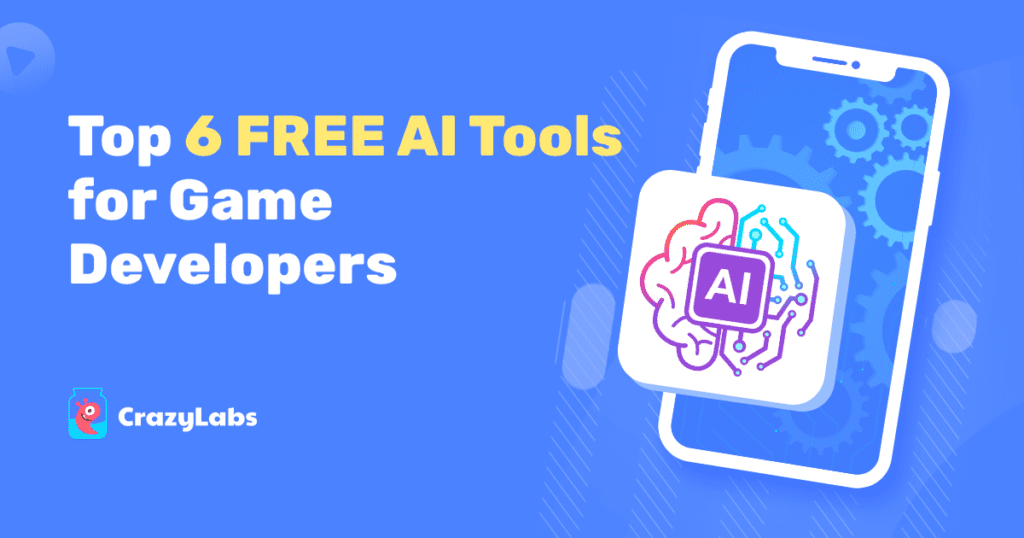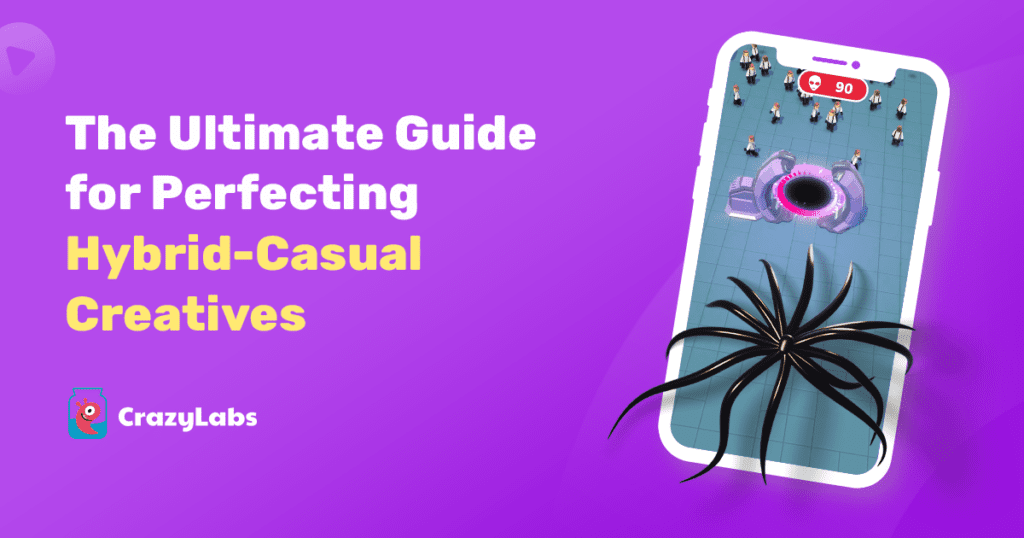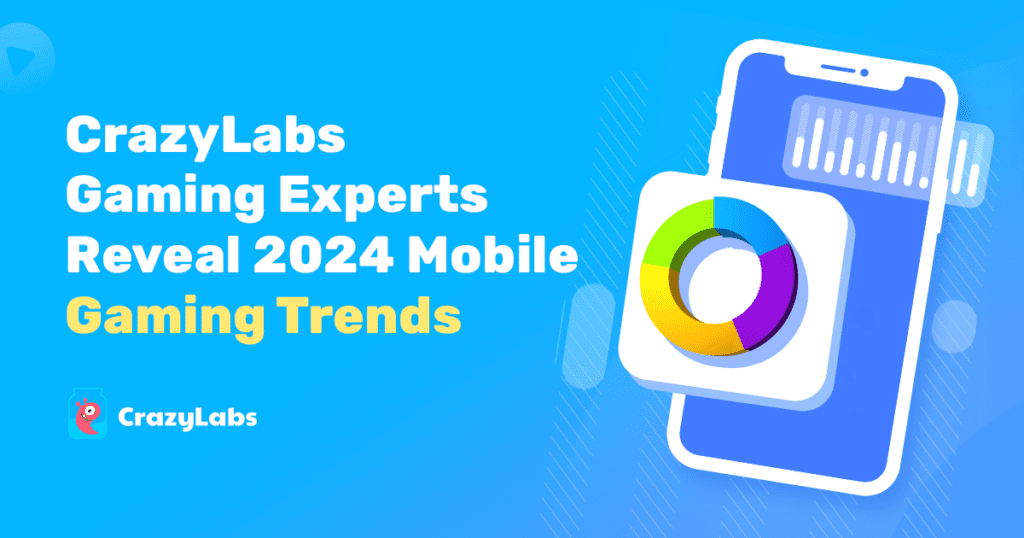In recent years, the hybrid-casual business model has emerged as a powerful force, blending hyper-casual games with the depth of casual/midcore games. This combination has proven to be a winning formula, capturing the attention of an engaged audience. However, only achieving initial engagement is insufficient—sustained retention is the key to prolonged success, which necessitates a strategic approach to guarantee long-term success. Below, we share our best practices for boosting your hybrid-casual game’s retention.
Why Player Retention Matters
Retention in hybrid-casual games is incredibly important because it directly impacts a game’s long-term success. When players return to a game regularly, it shows their engagement and satisfaction, leading to increased opportunities for in-game purchases and advertising revenue. Moreover, high retention rates also allow developers to gather valuable data on player behavior, enabling them to make informed updates and improvements to keep the game fresh and appealing — ultimately ensuring the game’s longevity in a competitive gaming market.
Tips for Improving Retention in Hybrid Gaming
All of the tips listed below must be constantly monitored, analyzed in terms of data, and iterated for optimization.
1. Strong Core Mechanic
A game’s core mechanic serves as the foundation. In hybrid games, we typically stick to the same core mechanic throughout the entire game, except for unique mechanics that appear occasionally, such as in special live-op events, boss levels, etc. This mechanic should be incredibly enjoyable, fulfilling, and fine-tuned to offer players a repetitive experience that won’t leave them bored. A good example of this can be seen below in the grappling mechanic of Alien Invasion, MLU’s mining/chopping action, or Mob Control Soldier Dispatching—all of which showcase strong core mechanics.
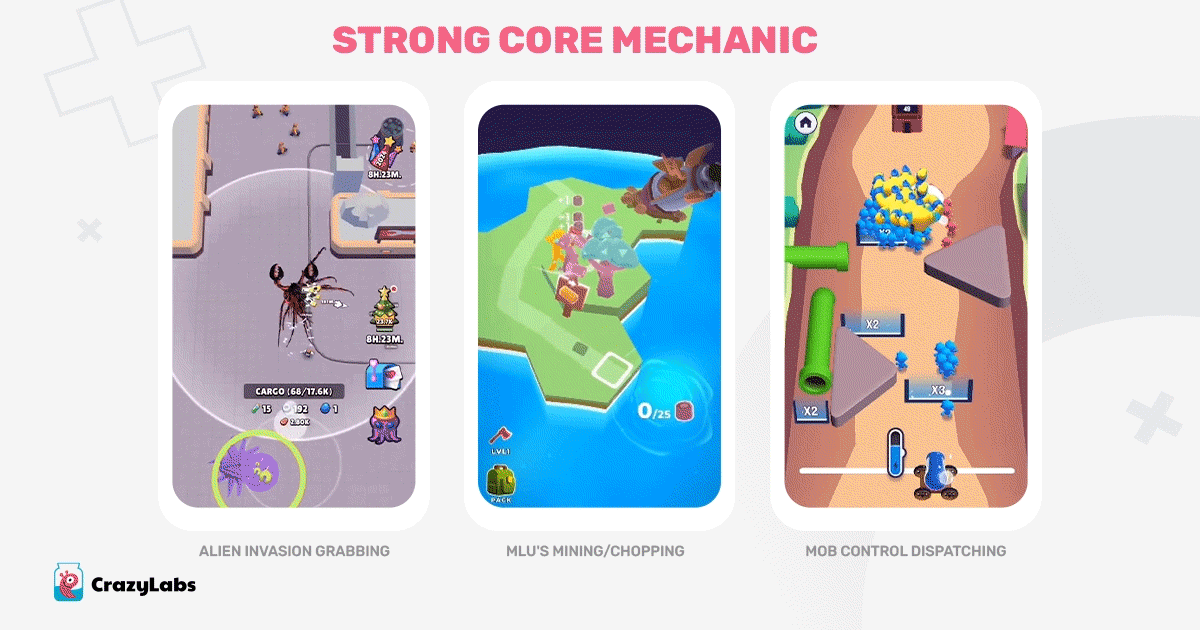
While it’s possible to iterate, pivot, conduct AB tests, and polish it as development progresses, it remains one of the most crucial aspects for retention and overall KPIs to align with. This is of high importance as even small adjustments to certain parameters or specific game logic can lead to a significant impact on a game’s KPIs.
2. Simple & Captivating Onboarding Experience:
Developing a simple, well-designed onboarding process is of utmost importance as it ensures that players understand the game mechanics, goals, and feel a sense of accomplishment and excitement to explore further.
Once you’ve addressed the ‘simplicity’ aspect of onboarding, you must shift your attention towards ensuring that it’s a captivating onboarding experience. The first few seconds of a game can either hook players or leave them disengaged. The more users a game retains in its early stages, the greater the likelihood that it will continue to play and become monetized later on. Many times, games miss out on potentially engaged users due to ‘inadequate’ onboarding.
This is why it’s advisable to include the tutorial within the core gameplay itself, teaching and revealing everything without explicitly labeling it as a ‘tutorial’ for the player. In other words, when a player clicks on the game ad, they should be able to start playing immediately without any text interruptions or official tutorials.
Below are three good examples of onboarding, as from the moment you watch or play them, you immediately understand how to progress in the game.
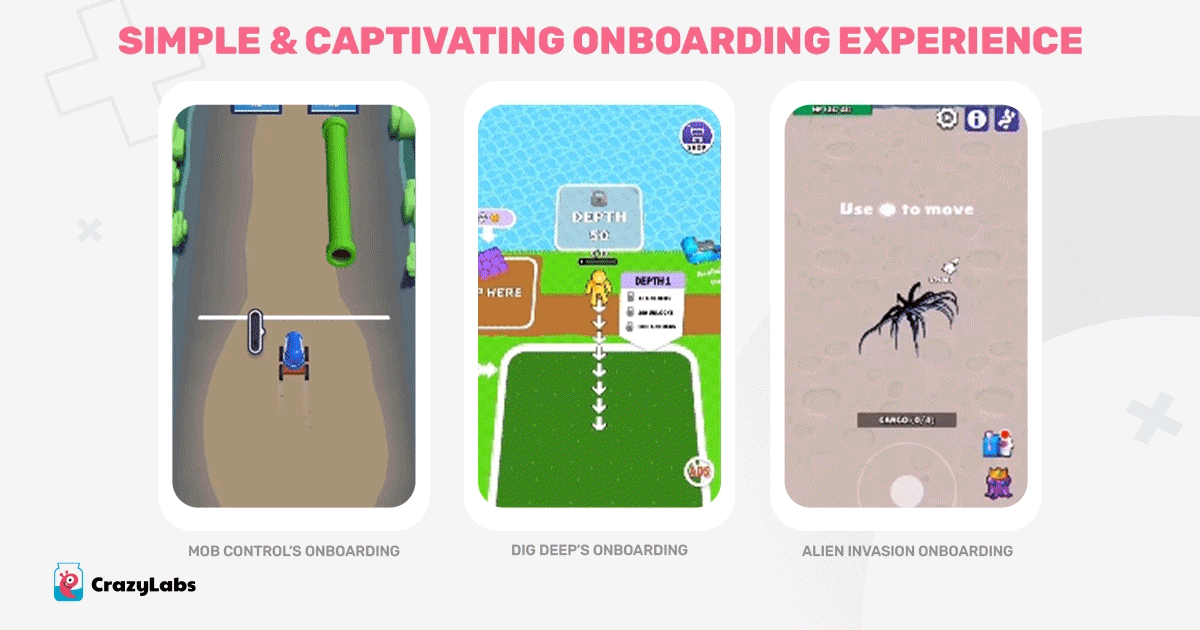
Additionally, when appropriate, it’s advised to match the goals and difficulty of the gameplay to focus on the subject being taught. For example, a level teaching how to use a specific power-up should be simple, short, and built in a way that reveals the power-up’s full potential, focusing only on its advantages.
Pro Tip – Frequent Updates: Keeping your hybrid-casual game updated with fresh content is a proven method for retaining players. Players are more likely to stick around when they know there’s always something new and exciting to look forward to; it can even be an upcoming update or feature. Regular updates can include new levels, challenges, bosses, characters, live events, and new areas. You can maintain player interest over the long term by staying ahead of player expectations and consistently delivering fresh experiences. Below are a few examples from SayGames demonstrating the impact of frequent updates:
| Game Name & Update Version | Date | Content | Results |
|---|---|---|---|
| Squad Alpha 1.7.4 | 5.9.23 | Added new episodes: 12, 13 & 14 | Revenue up by 46% |
| Squad Alpha 1.7.6 | 2.10.23 | Added new episodes: 15, 16 & 17 CLAN BASE: NEW ROOM | Revenue up by 41% |
| Summary of Squad Alpha | October 23 | After both updates | D1 added 2.61% D3 added 2.34% D7 added 1.39% |
| Dreamdale FA 1.0.25 | 2.6.23 | New islands, quests, resources | Revenue up by 46% |
| Dreamdale FA 1.0.26 | 8.7.23 | Patrolling Ranger, resource trading, Happy Farm event and Mystery Lands Mission | Revenue up by 48% |
| Dreamdale FA 1.0.28 | 28.8.23 | Character customization, New inventory, villager & helpers and Better navigation | Revenue down by 14% |
| Dreamdale FA 1.0.30 | 27.9.23 | New Island, resources, villagers missions, Monuments & Improved Download process. | Revenue down by 13% |
| Dreamdale FA | October 23 | After 4 updates | D1 added 6.06% D3 added 5.32% D7 added 4.08% |
source: gamerefinery.com, data.ai
Below is an example from Alien Invasion: RPG Idle Space, showcasing frequent content updates, such as special ‘timed’ events. These events introduce the player to new enemies, currencies, and progression systems. As a result, the gameplay is kept fresh, and the additional economy allows new monetization options. According to GameRefinery, integrating recurring live events is the most effective way to increase revenue in Alien Invasion.
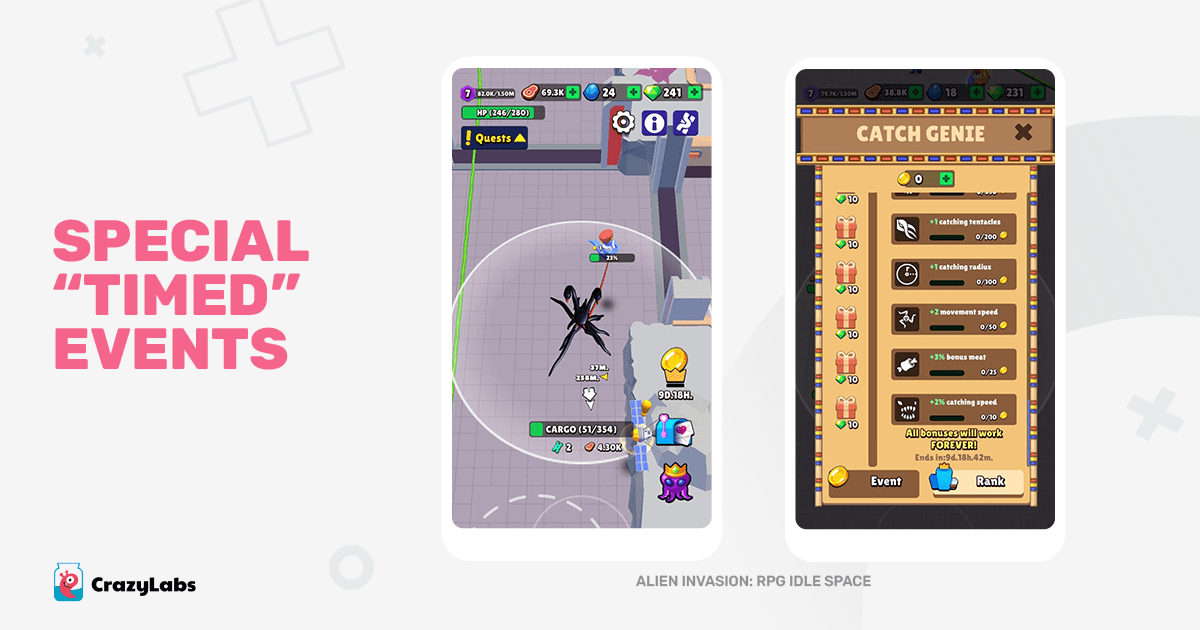
3. Rewarding & Balanced In-Game Economy:
A balanced and rewarding in-game economy plays a pivotal role in boosting player retention in hybrid games while enabling monetization. When players perceive that their in-game efforts are consistently met with fair and enticing rewards, they are motivated to stay engaged over the long term.
A well-balanced economy ensures that in-game currencies, items, and resources are obtainable through regular gameplay, making it accessible to both free and paying players. This creates a sense of accomplishment and progression, as players can see their efforts resulting in real in-game rewards. Additionally, a fair and rewarding economy reduces frustration, prevents pay-to-win scenarios, and promotes a level playing field, which encourages players to invest time and potentially money into the game. When players feel that their time and dedication are consistently acknowledged and rewarded, they are more likely to stay committed and become part of a thriving, loyal player community, ultimately leading to improved retention rates.
Below is another example from Alien Invasion: RPG Idle Space, which is driven by a multi-layered economic system, taking inspiration from pure idle games in terms of exponential growth and pricing. The game features numerous currencies introduced to the player as they progress through the game.These currencies allow the player to upgrade their character, minions, buildings, or factories and increase their power. The use of multiple currencies opens up opportunities for various progression mechanics such as currency exchangers, and many game design possibilities. These can include ‘special’ enemies that the player must diligently farm to obtain the desired currency. According to GameRefinery, two Alien Invasion elements — special live event currency/materials and the variety of resources — have the second largest impact on revenue.
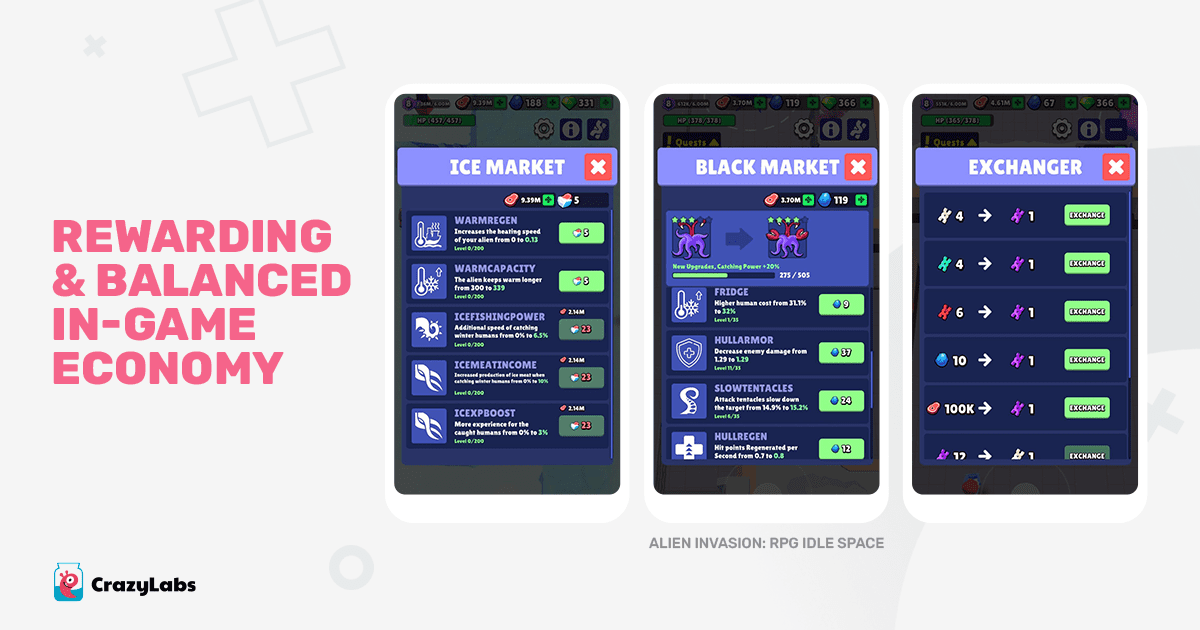
4. Rewards and Incentives
Implementing a reward system can be a powerful tool for player retention. Daily login bonuses, achievement rewards, and in-game currency for active players create incentives to return regularly. By providing tangible rewards and acknowledging player efforts, you not only keep players engaged but also motivate them to stay committed to your game and make progress.
Additionally, the rewards spark a ‘ joyous’ feeling of getting a reward, which is just as important as the reward itself. Positive feedback should be strong and significant, ensuring that users not only receive a reward but, more importantly, feel truly rewarded.Below are a few examples from SayGames that exhibit the impact rewards and incentives can have on monetization, while maintaining similar retention:
| Game Name & Version | Reward / Incentive | Time Frame | Results |
| Squad Alpha 1.6.22 |
Added Shop Rewards, “Arcade Machine” mode (Arcade Coins Boost Prizes), new perks & attributes and new gear & weapons | May – June 23 | D1 added 0.33% D3 added -0.97% Revenue up by 45% |
| Dreamdale FA 1.0.36 |
Added limited-time winter event | Nov – Dec 23 | D1 added 0.62% D3 added 0.03% Revenue up by 58% |
| My Perfect Hotel 1.7.2 |
Added daily free gift and progression element in daily reward | Dec – Jan 24 | D1 added 0.65% D3 added 0.32% Revenue up by 43% |
source: gamerefinery.com, data.ai
Pro Tip: Note that if the economy is not balanced (if it’s too easy, it may bring boredom; if it’s too difficult, it can cause frustration), rewards and incentives will not be relevant to the players.
5. Progression System
A well-designed progression system is a key ingredient in retaining players in hybrid games. It’s about creating a satisfying and balanced journey for players as they advance through the game. A successful progression system should provide clear, reachable goals, which in turn encourages a sense of achievement and a sense of constant improvement. This keeps players engaged, motivated, and excited about their in-game journey. It’s important to strike a balance so that progression isn’t too easy, leading to boredom, or too challenging, causing frustration.
By providing a carefully crafted path that encourages players to explore the game’s depth, master its mechanics, and witness their characters or accounts grow stronger over time, you can keep players coming back to achieve the next milestone or level up their virtual selves. A well-structured progression system ultimately creates a long-term bond between the player and the game, increasing the chances of them staying engaged and returning for more.
*It’s important to note that when developing your game, it’s essential to distinguish between different types of progression, such as D0+1, D3, D7, D14, D30, etc. Each of these stages presents its own set of challenges and requires specific solutions to be applied.
An example of this can be found in Alien Invasion: RPG Idle Space, which employs classic character power progression with a strong, multi-layered economic design. Players can upgrade their characters through various in-game ‘stores,’ all of which use a combination of currencies and offer a variety of both functional and aesthetic progression mechanics.
Furthermore, in addition to the classic ‘upgrade’ progression, the game features a narrative, quest-based progression system. This system encourages players to continuously advance within the game world, whether by conquering challenging enemies or unlocking new areas. It motivates players to keep playing and maintains a consistent level of challenge.
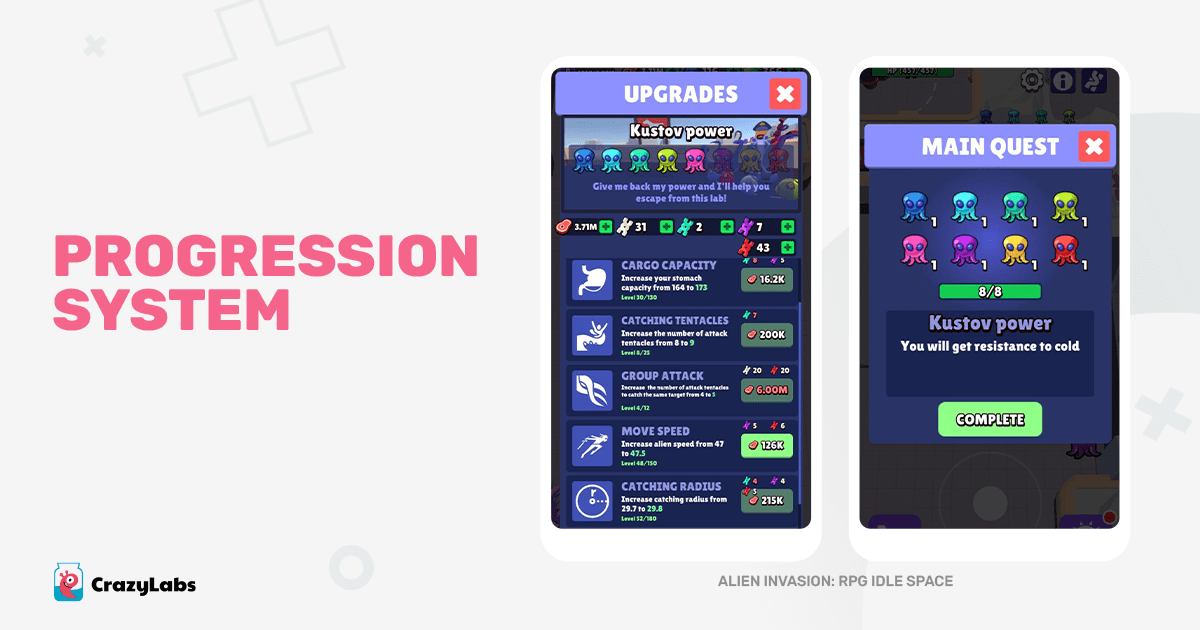
Performance Optimization: Ensuring that your hybrid game runs smoothly on a wide range of devices is crucial for retaining players. Slow load times, crashes, or excessive battery drain can frustrate and deter players. Regularly optimize your game’s performance, fix any technical issues, and test it on various devices to provide a seamless and enjoyable experience, which can help retain players and prevent negative reviews or uninstalls. Below is an example from Voodoo demonstrating the impact performance optimization can have:
| Game Name & Version | Content | Time Frame | Results |
| Mob Control 2.58 |
Important performance optimizations Fixes fail to sync progress 20 bugs fixed |
June – Aug 23 | D1 added 4.15% D3 added 3.23% D7 added 2.54% Revenue up by 37% |
source: gamerefinery.com. data.ai
Pro Tip – Feedback and Support: Establishing effective channels for player feedback and support can significantly boost hybrid player retention. Listening to player suggestions and concerns, and responding promptly to their needs, fosters a sense of community and trust. When players feel heard and supported, they are more likely to remain engaged with your game. Additionally, addressing bugs, and fixing issues promptly and transparently contribute to a more positive gaming experience, which, in turn, can increase player loyalty.
Below are examples from SayGames that demonstrate the impact of leveraging players’ feedback (coupled with quick support) to increase monetization while maintaining similar Retention:
| Game Name & Version | Content | Time Frame | Results |
| My Perfect Hotel 1.4.0 |
Many game improvements based on players’ feedback | Sep – Oct 23 | D1 added 1.24% D3 added 0.54% Revenue up by 64%, |
| My Perfect Hotel 1.7.2 |
Many game improvements based on players’ feedback and bug fixes | Dec – Jan 24 | D1 added 0.65% D3 added 0.32% Revenue up by 43%, |
source: gamerefinery.com, data.ai
Below is another interesting example from SayGames’ My Little Universe game. Here we can see the support button is prominently implemented in the initial splash screen as seen in the upper right-hand corner.
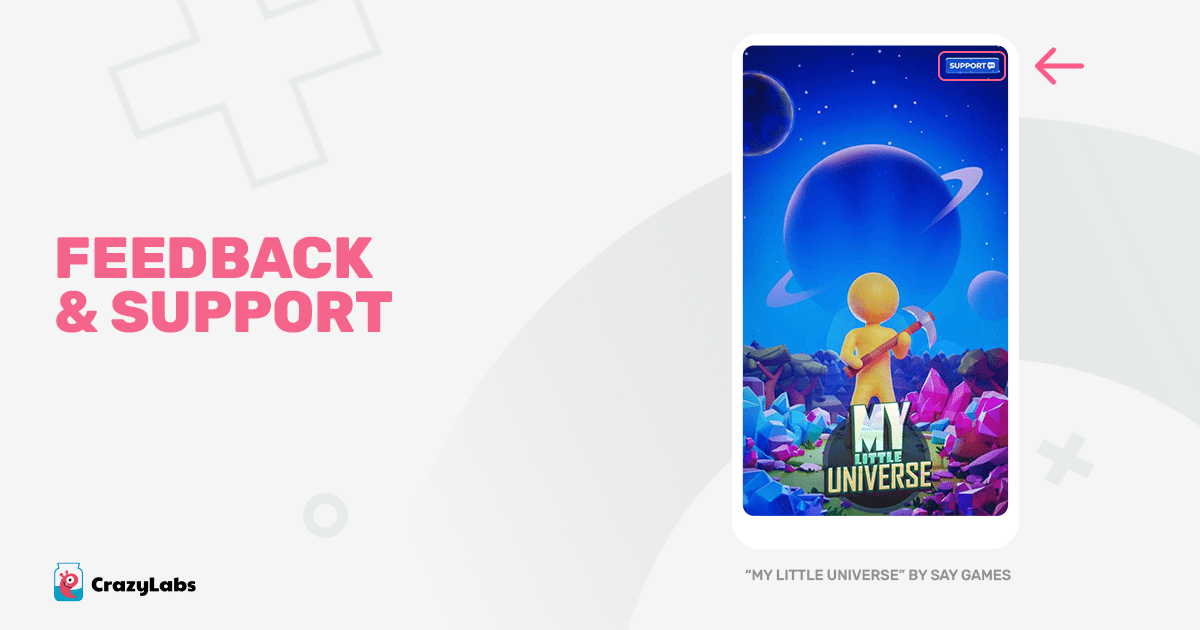
Over to you, apply these key tips to boost your hybrid-casual game’s retention and achieve long-term sustainability and profitability.
